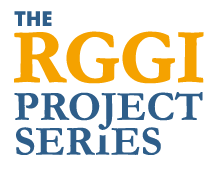
Expanding carbon trading to other states
It is well established among economists and energy experts that a broader carbon trading market with more participants is expected to lower the overall costs of compliance by lowering the marginal cost of CO2 control. [AG 2018 and RFF 2013]
The tradeable allowance structure operates well in both regulated and competitive electric industry contexts and integrates seamlessly with electricity market operations. [AG 2016]
The long-term efficiencies and cost decreases of broader trading will likely outweigh the impacts of short-term auction revenue reductions. [AG 2017]
The RGGI program design is inherently flexible and respectful of states’ various interests in economic, energy, and environmental policy outcomes and provides the best opportunity for low-cost reduction of CO2 emissions. [AG 2017]
RGGI states are uniquely positioned both to demonstrate the successful history of workable multi-state allowance trading regimes and to take the lead on adapting the RGGI framework to enable broader trading.
Source:
Linking by Degrees: Incremental Alignment of Cap-and-Trade Markets (Resources for the Future, 2013)
RGGI and CO2 Emissions Trading Under the Clean Power Plan: Options for Trading Among Generating Units in RGGI and Other States (Analysis Group, 2016)
RGGI and Emission Allowance Trading - Summer 2017 Update: Options for Voluntary Cooperation among RGGI and Non-RGGI States (Analysis Group, 2017)
The Economic Impacts of the Regional Greenhouse Gas Initiative on Nine Northeast and Mid-Atlantic States (Analysis Group, 2018)

Key PROGRAM DESIGN Features
States can participate in RGGI either by joining the program or adopting a comparable program to link with the RGGI trading market.
There are certain RGGI design features that are important to efficient and effective trading between states:
Minimum Requirements
A state carbon emissions cap, appropriate identification of affected sources (i.e., fossil fuel power plants), requiring or enabling the release of allowances into the market, RGGI CO2 Allowance Tracking System (COATS) or equivalent emissions tracking program, reporting and compliance obligations consistent with that of RGGI affected sources.
Allowance Comparability
RGGI’s historic success is due in part to the free and open trading of allowances among all sources in the RGGI region. The integrity and effectiveness of the RGGI trading system depends on the fungibility of allowances, which was established by an agreement of all states to the same budget or emissions cap, price floors and cost and emission containment reserves. Over time the level of carbon reductions achieved is equivalent across the states because they are l) starting with substantial equivalence amongst the states; 2) progressing through annual cap reductions of equal proportion across the states.
Emission Allowance Tracking
New participating states’ administrative framework for allowance trading, including creation, tracking, retirement and monitoring, must have equivalent integrity to the RGGI system to ensure the continued success.
Market Monitoring
RGGI auctions are conducted with the oversight of an independent market monitor which provide confidence in the prices and allowance disbursement outcomes resulting from auction. RGGI may want to ensure that new trading partners be subject to the same or similar monitoring requirements (especially in the secondary market).
Allowance Distribution
The manner in which allowances move into the market – whether by auction or given away for free, affects neither the cost of allowances in power production nor the ultimate level of reduction in CO2 emissions. The ultimate price of all allowances is driven by the marginal cost to meet the aggregate mass based limit on affected sources across the trading region, which is by the party that captures the value of allowances through initial distribution. The requirement to initially auction allowances as a condition of trading with RGGI is neither necessary nor prudent given that non-RGGI states may use a non-auction allowance distribution strategy.
Source: RGGI and CO2 Emissions Trading Under the Clean Power Plan: Options for Trading Among Generating Units in RGGI and Other States (Analysis Group, 2016)
RGGI and Emission Allowance Trading - Summer 2017 Update: Options for Voluntary Cooperation among RGGI and Non-RGGI States (Analysis Group, 2017)
States can link incrementally, as outlined by Resources for the Future (RFF) Linking by Degrees: Incremental Alignment of Cap-and-Trade Markets. [RFF 2013] Published in 2013, this report has had broad and significant impact on carbon markets worldwide. Cited in 56 scholarly articles and reports, Linking by Degree articulates an approach to linking carbon-pricing programs that has been embedded in national and subnational agreements and carbon markets, including the Paris Accord.
The research articulated opportunities for incremental alignment, such as:
Sharing best practices for measurement, reporting, and verification of emissions reductions
Learning and improving program design
Coordination of data collection and overall management of administrative costs

